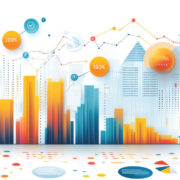Dear members and supporters of the Facial Pain Association,
I’d like to give you my updated take on the Facial Pain Registry, which is coming along and out of the pipeline. As stated previously, I wholeheartedly endorse it and enthusiastically encourage you to join to help the entire community and make your own contribution toward our fight against trigeminal nerve pain/oro-cranio-facial pain.
We made it through the initial launch of the registry. This platform will securely house deidentified data on clinical phenotype (characteristics) of patients with trigeminal nerve pain/oro-cranio-facial pain.
Needless to say, it will only work if you participate and if you answer the questions as completely and authentically as possible. I remain very enthusiastic about the registry because it is a highly constructive asset that we can bring to the table as a community. I hope that some of my explanations below help you come to a decision about your future participation.
What, why, how, and caveats:
De-identified patient data means that the initial entry into the database will be conducted so that the entry cannot be traced to the individual submitter. Completely separate and uncoupled from the de identified entry into the registry, we will set up a file that will allow de-identified entries to be reconnected with the person who is behind the entry. This will serve the purpose of requesting additional information, accessing additional medical data/information that might be available, or laying out opportunities to participate in specific studies if the need ever arises. We will keep the link that connects the de-identified data to real people as safe as possible. We will use encryption and other tools to protect your sensitive information from unauthorized access. People who share their information can choose to opt out of the reidentification process. Clinical phenotype refers to the entire spectrum of clinical history relevant to the pain that you suffer. For example, life habits as they pertain to your pain, possible sources of inflammation, and general sensitivity of your nervous system, to pain stimuli and your family history of pathologic pain, as well as other hereditary traits that might be relevant for understanding your pain.
All of these health-related issues will be queried in a standardized manner that will transform your answers into measurable data. That’s the pain phenotype that we want to establish from each entrant. This will allow us to derive powerful metric outcomes, then meaningfully combine single parameters into composite indices of pain in multiple contexts, e.g. in the context of other diseases that you also have (co-morbidities), in the context of family liability to pathologic pain, inflammatory and other relevant disorders (e.g.), Ehlers Danlos Syndrome, history of COVID, etc. There is power in numbers, and that is where the unique opportunity lies here.
Your data will be captured securely via the FPA website and mobile device app interface.
We have worked hard on this, and there should be no caveats if we continue to execute this correctly, leveraging the technology to all our advantage.
Outlook:
Existing general health patient repositories have been coupled with medical records and exploration of specific biospecimen, e.g. UK Biobank. This will be a future option and will benefit from generating even deeper experiences beyond the astounding success that has already been accomplished. Such biobanks essentially couple clinical phenotypes with biological metrics that have already been conducted, e.g. brain MRI scans and measurements in blood. Undoubtedly the most powerful and promising method is DNA genomic sequencing. Sequencing a patient’s exome, essentially the part of their genome that codes for proteins, will be a powerful, practical, and fiscally feasible way forward. In addition, blood proteomics data now can be derived on less than 1 milliliter of serum, currently allowing quantitative measurements of hundreds of proteins, with price tags going down with time (costs not to be carried by the patient, in any case, to be clear). Of course, this will only work by adhering to the informed consent principle, and to the de-identification principle that already guides the data entry.
What could come out of this?
Analyzing clinical phenotypic data, which we previously thought was impossible, can give us new insights into disease biology. This analysis can help correct misunderstandings we currently have and help plan follow-up studies. For example, we can ask for more details about the pain phenotype that we haven’t explored yet, and we can gather and archive related MRI scans for certain cases.
We are excited to clearly see a beacon on this hill in the not-too-distant future: genome and serum proteome of a large cohort of trigeminal nerve pain/oro-cranio-facial pain patients. I keep saying “beacon on the hill” because this approach has truly transformative power for getting things done in the pain arena that were unthinkable not that long ago.
This is from my perch as an industrial therapeutics developer, previously having enjoyed decades of working together with my patients as academic medicine physician and clinical developer, and in my laboratory as basic science researcher (at Duke University), with my focus on trigeminal nerve pain/oro-cranio-facial pain.
Finally, we believe there is no other stakeholder more suitable than us at the FPA to get a patient registry off the ground, to own it responsibly and ethically, to be independent of vested interests (including commercial, academic, governmental), and to maintain and run it successfully.
Please continue to share your thoughts with the FPA at [email protected] as we put the finishing touches on the Facial Pain Registry.
My very best to all of you,













































